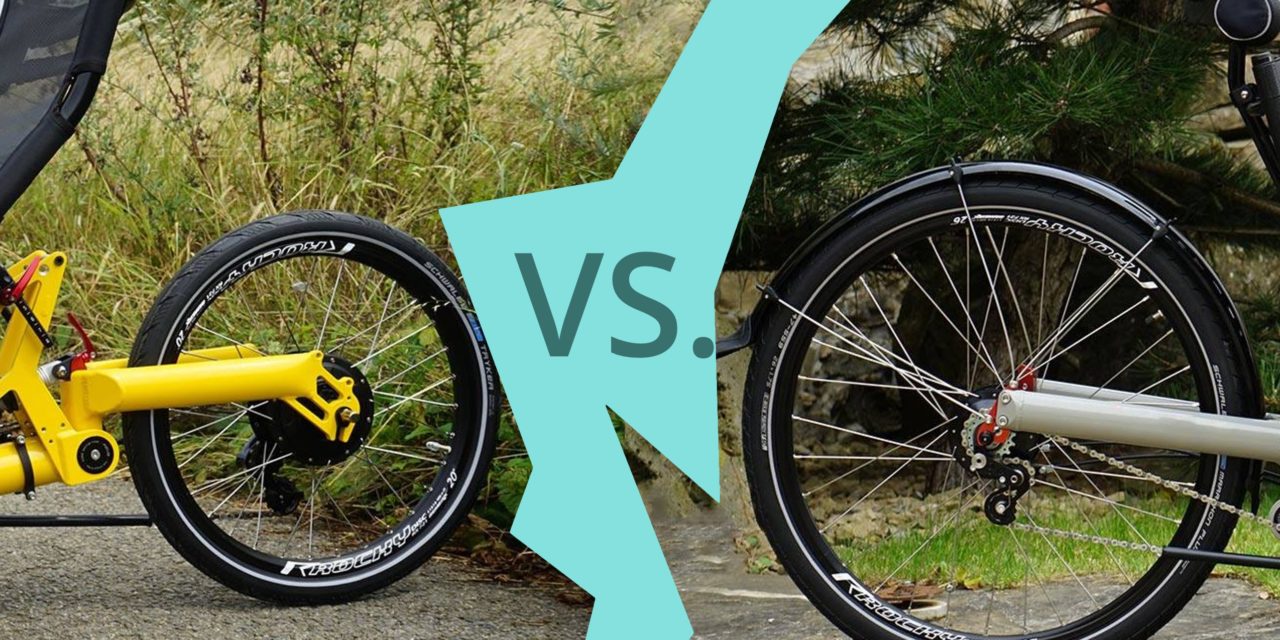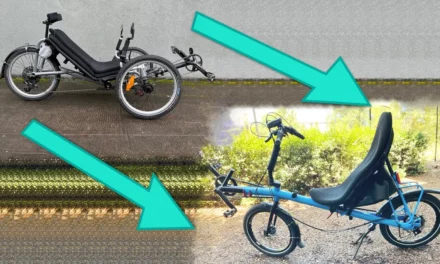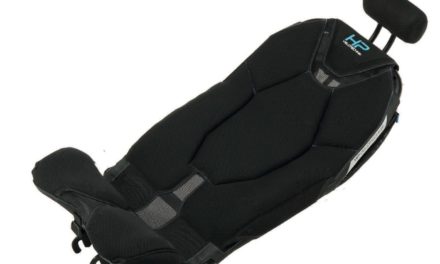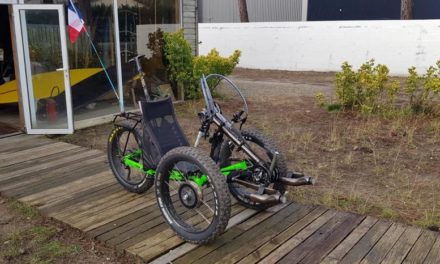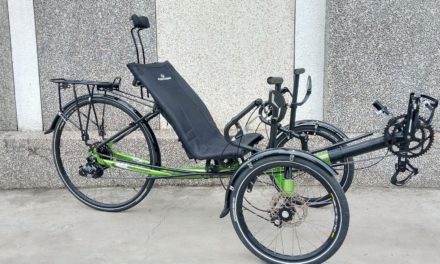“Shall I choose a trike with a 20 or 26-inch rear wheel? Or even a 700c?” This is a very common question. To decide which size of a wheel to use on a trike is not exactly easy. That is unless you have fallen in love at first sight with one or the other because of their appearance. So I will try to get deeper into this topic in the following article.
If you are interested in all different wheel sizes used on recumbent cycles, read my article here.
20“ (16“) rear wheels
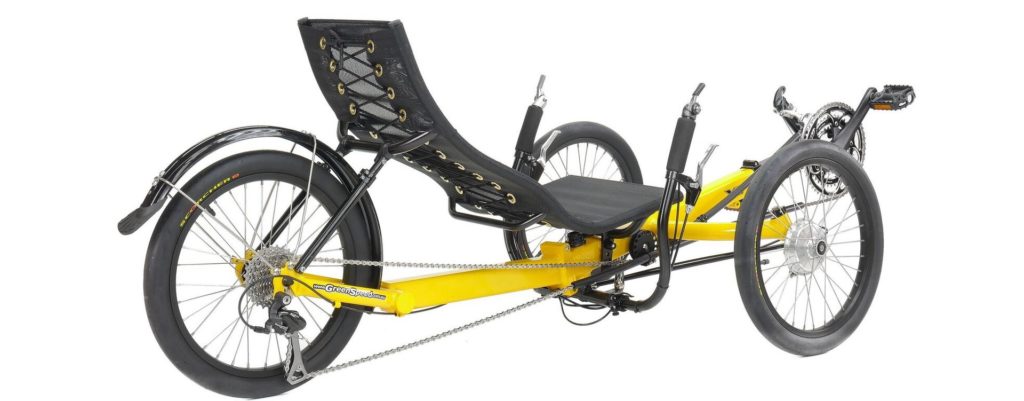
Trikes with 20“ rear wheels, or better to say all 20“ wheels are very compact and very neat vehicles that are great to maneuver in small or crowded places. They are also easy to store or transport and it doesn’t really matter whether folded or not. There are even trikes with 16“ wheels from Greenspeed like the X7 is a lovely little trike which folds small, ride great and is just superbly designed, by a trike legend Ian Sims. Not to mention the stiffness of small wheels which is so important for trikes supposed to be used by heavy riders. Read here the pros and cons of smaller rear wheels.
- A trike with a 20” wheel in the back is generally smaller, especially when folded which can be very important when you need to fold your trike for transport or storage. Even in case, you don’t need to fold it the overall length can be important for you.
- Due to the smaller size, it is also livelier and the trike has a smaller turning circle.
- The rack is positioned lower above the ground and when loaded, the trike has a lower center of gravity which further enhances the riding properties.
- 20” wheel is also much sturdier and copes much better with the high lateral load when cornering, as well as with heavy riders and any possible luggage.
- 20” wheel also has less inertia, so it accelerates faster, and pedaling uphill is slightly easier due to its lower weight.
- If you plan to have a trike with 20“ front wheels, you need to carry just the one size of the spare tube. If you plan to go on a long-distance tour you need just the one size spare tire as well.
- The overall weight of 20“ rear wheel trike is generally lower than of the one with 26“ rear wheel.
26“ rear wheels
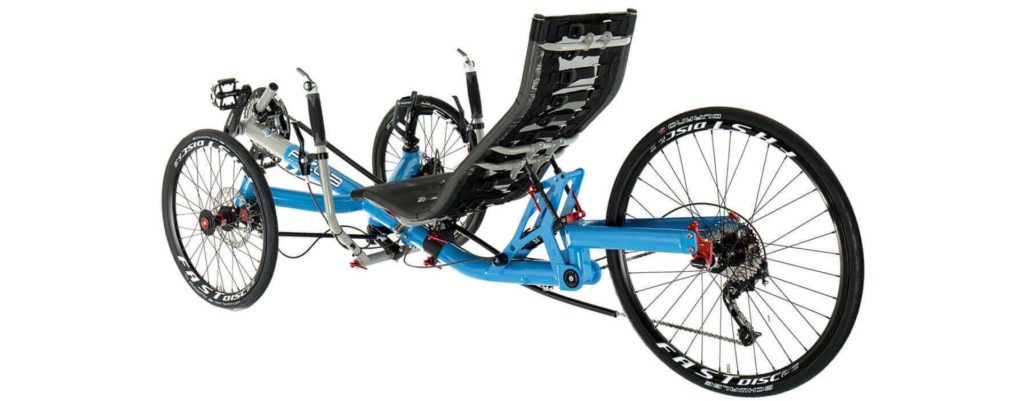
Many people just like the look of the 26” rear wheel and for them, it is the biggest factor when they are making the decision, but there are some objective reasons why to opt for this size as well. And, of course, there are some downsides too.
- The 26” wheel has more inertia and therefore it is better at maintaining speed on flat terrain and when going downhill. However, it should be noted that for an ordinary rider, the differences in acceleration and overall speed are negligible and he or she won’t really notice them.
- The 26“ or if you wish 559 sizes (read more about the wheel sizes of recumbent cycles in my separate article here) is much more common than the 406 / 20“ wheel size so it is much easier to find the right combination of gears or the perfect components like tires or rims. On the other hand, also this size is kind of disappearing as the MTB world is turning around twenty-niners nowadays.
- The larger wheel provides a higher level of comfort since due to its larger size it „coast“ better through the potholes as the wheel doesn’t fall in so much. This increases the speed a bit as well.
- There is a lot of flex coming from the 26“ rear wheel and not only the wheel itself, but also the frame suffers then. Many trikes with 26“ or 700c rear wheels have worse riding properties while cornering than the smaller trikes with 20“ rear wheels.
700c rear wheel
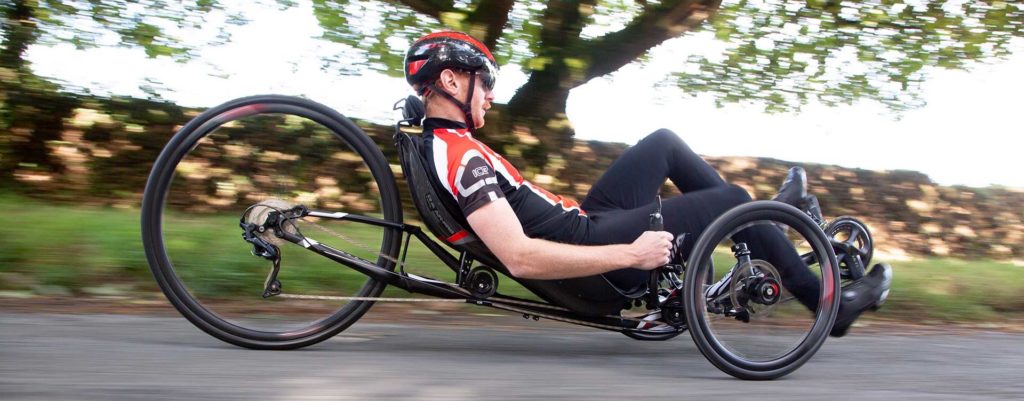
Such wheels are used on road trikes which are supposed to be ridden on good and fast surfaces. For such use, they have all the advantages you need. They are light and they have the widest available choice of components for that particular use, but they are also quite uncomfortable as they are built very stiff vertically, however, the trikes with them are usually very flexy in the rear part while cornering fast. If you want to purchase a trike with a 700c wheel you should really know you want it and what does it mean for you. Road trikes are usually very low, it is much worse to get on and off them and the riding comfort is limited. But hey, they are fast and fun to ride!
It is better to make a big wheel and have more people on trikes.
Talking about wheel sizes, I always like to mention a little story. Ian Sims, already mentioned in this article, a trike legend who passed away in 2019, when founded his company, started to use a logo with a trike that has a larger (most probably 26”) rear wheel. He has also built some with such wheel set-up at that time, but when I had a chance to work with him around 2010 he considered the large rear wheel to be counterproductive and all Greenspeed trikes had either 20” or even 16” wheels. Even on the very sportive Aero trike which has 20” rear wheel and 16“ front wheels to date. But, the market and the demand from folks coming from upright bikes have been clear. Either you as a trike company have 26” rear wheel or you are gone. So even Ian and Greenspeed had to reconsider their beliefs and bring some 26” rear wheel trikes to the market. Even on the Magnum which – as a trike for TBB´s (Tiny Bit Bigger riders) – largely benefit from 20” small rear wheel.
I have asked Mich Sims, former sales and marketing director of Greenspeed and Ian’s son, about 20 vs. 26“ rear wheels and here is his answer:
“Yes, Greenspeed always resisted large wheels on trikes due to the extra forces being transferred to the frame under cornering loads. Ian bowed to the market pressure in the end. I told him “you are getting soft in your old age, dad“. I also said it is better to make a big wheel and have more people on trikes. Once they like trikes then they can see benefits of the smaller wheels later. It was also an easy way to make trikes more cost-effective because the gears with clusters under 11t, never really got enough attention from the component companies. Same for good shifting with larger rings up front.“
Now, it is up to you to decide the right wheel size.
Do you have any comments about this topic? Feel free to share your experience with us in the Disqus comments here under the article.

